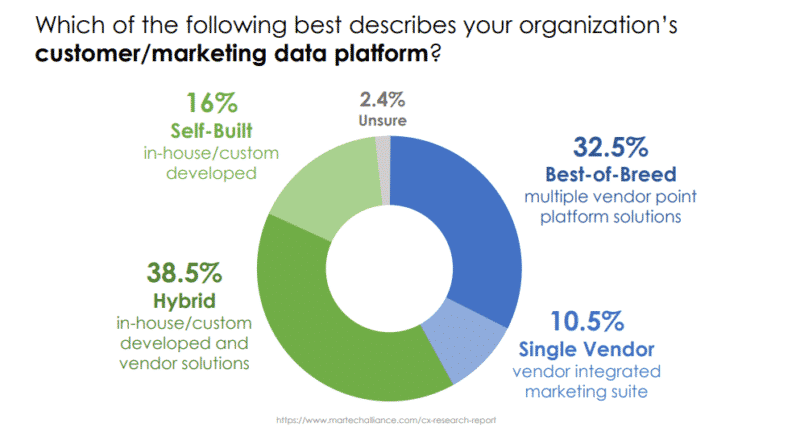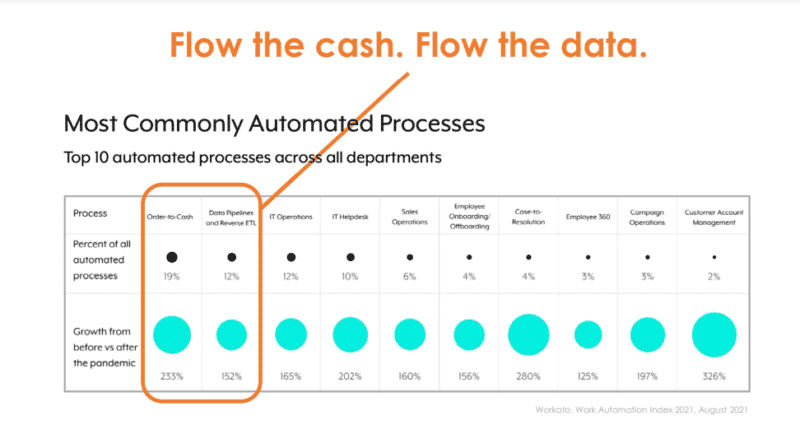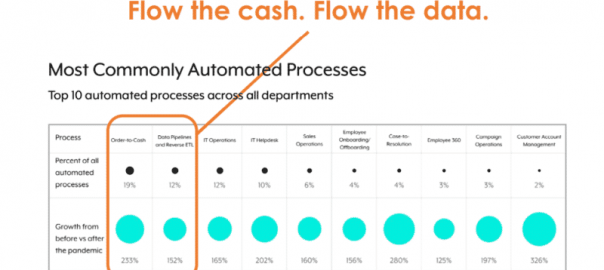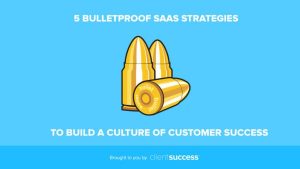How marketers can navigate the tech explosion around every business function imaginable. DevOps and DataOps for starters.
Every marketer has seen that crowded graphic of the marketing technology landscape, which gets set in smaller print every year as the number of vendor logos balloons, now, to over 8,000 and counting.
“This explosion of software is happening everywhere,” said Scott Brinker, creator of the graphic and also Editor of chiefmartec.com and VP Platform Ecosystem for HubSpot.
Brinker closed Day 1 of MarTech with a keynote addressing this growth in software applications and the transition to digital-first operations that affects how all of us do our jobs. He cited an IDC Technologies prediction that there could be over 500 million digital apps and services deployed using cloud native approaches by 2023.
“Not all of these are going to be commercially packaged solutions you can buy off the shelf, although there will certainly be plenty — hundreds of thousands of SaaS applications,” Brinker said. “But there will be an even larger number of custom apps built within individual companies.”
Big Ops data interactions
As any marketer can tell on a daily basis, the amount of data out there is proliferating. Of course, as discussed in the other Day 1 keynote, the data isn’t always perfect.
But as data continues to grow, the applications to manage and activate it are growing even faster.
“The thing about Big Ops is that it’s not just the data that’s growing, it’s the interactions that every single one of us as an individual is having per day with data,” Brinker said. “That’s actually growing even faster than the data in the world.”
Brinker added, “Inside companies, this has triggered an interesting effect of a proliferation of Ops functions.”
Based on the way these Ops functions have been discussed in business coverage and among other professionals, as well as the experience that professionals are having within their own organizations, we can see the emergence of Ops in marketing and sales departments and throughout the org.
Although changes brought on by Ops have been long in the making, the rise of Ops is now changing how important functions gets done, and how businesses become more competitive.
DevOps closes development gaps
“There used to be quite a bit of separation between developers building software and operations teams responsible for running that software,” Brinker explained. “And this separation created all sorts of friction.”
The role of DevOps was to bring these two functions closer together to overcome delays in building and implementing software.
“This is actually highly relevant to marketing because marketing just has so much software that we’re not just buying off the shelf but that we’re building ourselves or connected to being built,” said Brinker. Marketing teams are building websites, web apps, mobile apps and custom-developed marketing technology.
To get an idea of the fluid way that marketers are not just using technology but developing it, Brinker looked at a recent study that showed that over a third of orgs (38.5%) are using hybrid in-house/custom developed and vendor solutions.

Automated Digital Processes
Another indication of the growth in Ops is to see which processes are being automated within an organization.
Based on a recent study by Workato, it’s obvious that the pandemic has pushed businesses into transforming many of these functions.

“The two top automated functions were order-to-cash and data-pipelines…to me this is like the mantra of modern business — flow the cash and flow the data,” said Brinker. “But also, look at those percentages of all automated processes. They’re still mostly pretty low. We have a lot of headroom ahead in Big Ops on how many things can be automated, and automated across departments and not just within one.”
DataOps Ecosystems
With all of the metaphors of water used to describe the flow of data (data lakes, data streams, etc.), Brinker finds that the best way to think about how data sits within an organization can be to use the metaphor of an ecosystem, with different DataOps working together in a symbiotic relationship.
“Data is generated from all sorts of frontline apps, websites, any sort of customer touchpoints, perhaps external data we’re bringing in,” he said. “We then feed that into some sort of centralized system like a data warehouse or data lake, and then from there it gets pulled out to data science and machine learning and business intelligence, and then also fed back in to our frontline apps and Ops as well.”
He added, “All this data explosion is very much what has been driving this new DataOps-type role.”
As data becomes more crucial to the business overall, it also grows in importance for marketers to have access to DataOps. Marketing automation requires quality data and an effective way to pipe it into campaigns to achieve relevant messaging and personalization.
“Both being a consumer of this data from a larger DataOps ecosystem but also a contributor has a lot of value to bring,” said Brinker.
The idea of an ecosystem also applies to the many vendors and platforms in the data industry from which marketers can benefit.
“What’s fascinating is that on the platform side, you see consolidation down to a few leaders, but consolidation is actually being achieved by aggregating an incredibly rich and diverse ecosystem of all the other things that are serving on that platform,” said Brinker.
If marketers find themselves on the crest of this new wave called BigOps, they’re seeing it in how they use data, and how they continue to develop and adopt new technologies efficiently within their organization.
Watch the full keynote here (free registration required).
The post From Big Data to Big Ops: Brinker speaks on marketing ops shift in MarTech keynote appeared first on MarTech.
(96)
Report Post




